To blanch something means to make it white (or at least pale), which is usually achieved through excluding light. When they are mature enough to eat, I blanch my Endives by tying them up quite closely, using soft string, like this:
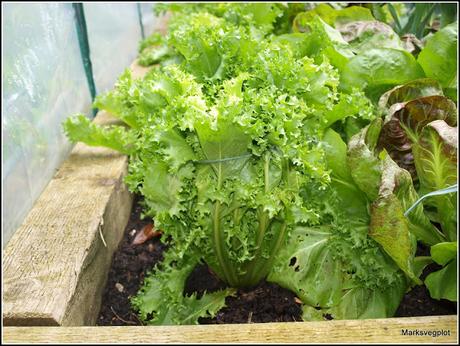
This is a job best done on a dry day, because if the heart of the Endive is too wet it may rot. The time needed to achieve full blanching depends on a number of factors, such as the size of the plant and the weather conditions, but I usually find that 7 - 10 days is about right. If you are not sure if the plant has blanched enough you can always remove the string and re-tie it if necessary.
When you remove the string from a properly-blanched Endive you should see something like this:
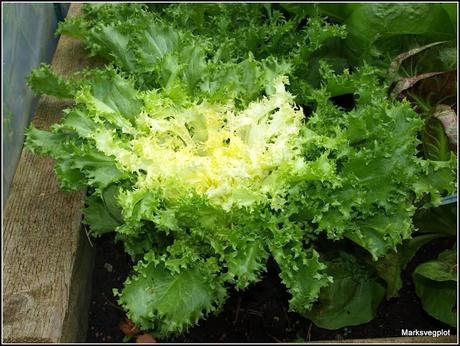
The blanched part will probably be less than half of the plant, and the green leaves may not be pleasant to eat. This is not a problem for me, because an Endive like this produces plenty of salad for at least two big portions - probably more.
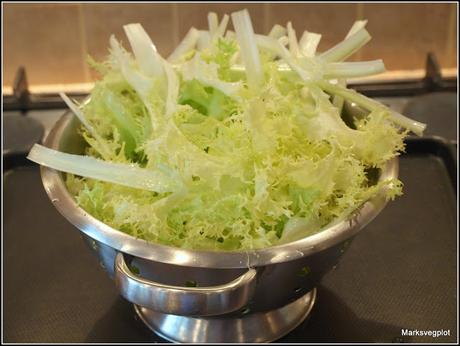
The size will also depend on the type of Endive and how long you let it grow before harvesting. I have no idea what variety this one is, because I grew mine from a mix of all the types for which I had seeds.
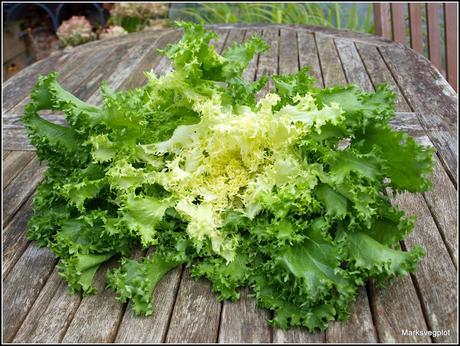
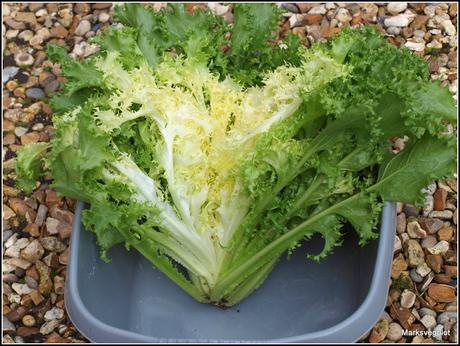
I think Endives are very photogenic, so I'm putting lots of photos in this post of mine!
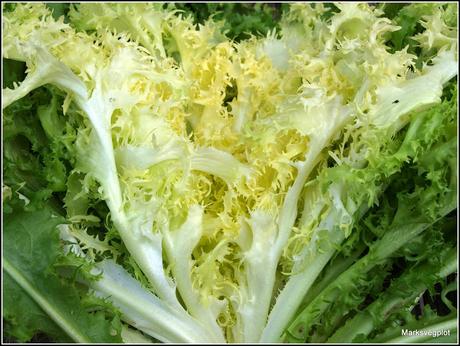
Endives, with their crunchy texture, slightly bitter taste, beautiful creamy-golden color and deeply-dissected leaf shape make excellent salad ingredients. Many people like to mix them with sweeter ingredients like Lettuce, but we actually prefer them on their own. The one I have shown off here was served with a nice sharp French Dressing / vinaigrette, as an accompaniment to roast Rack of Lamb with Gratin Dauphinois. This is a meal which we look forward to for weeks in advance, when the Endives are getting towards maturity! For Jane and me this meal is evocative of days spent in Hong Kong many years ago. We ate it several times in a little French restaurant called "Au Trou Normand", which we really loved.
Incidentally, if you plan to grow Endive, I recommend you treat it much like Lettuce, but be aware that it is prone to bolting if its soil is too dry. For this reason I usually grow my Endives for Autumn harvesting as opposed to Summer. I have also found that Endives sown very early in the year often bolt too, because they don't like the big fluctuations in temperature that Spring often brings.
